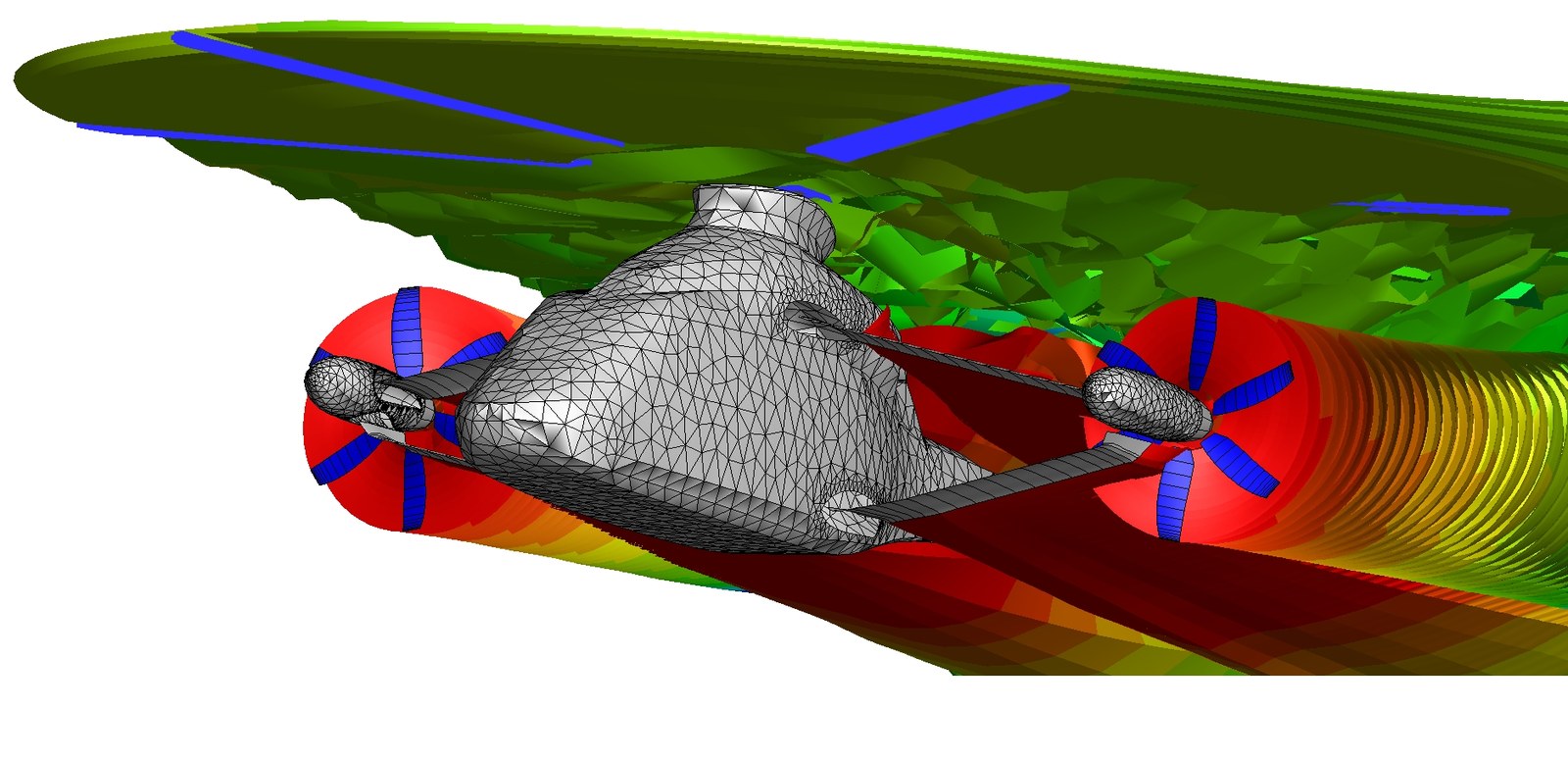DLR analyses noise properties of the new high-speed helicopter RACER
- DLR analyses the acoustic properties of the high-speed helicopter RACER.
- Interactions between individual components that generate noise can be calculated in order to predict the overall noise from the helicopter.
- Focus: Aeronautics, helicopter and acoustic research
The Rapid And Cost-Effective Rotorcraft (RACER) is a demonstrator that flies faster, farther and more efficiently than previous helicopters. Airbus first presented the concept for the new high-speed helicopter, featuring a box-wing design, back in 2017. Researchers at the German Aerospace Center (Deutsches Zentrum für Luft- und Raumfahrt; DLR) have now analysed and determined the acoustic properties of the configuration, which has revealed that RACER is not only faster, but also quieter.
Researchers at the DLR Institute of Aerodynamics and Flow Technology in Braunschweig and the French Aerospace Lab (Office National d'Etudes et de Recherches Aérospatiales; ONERA) can now use their computational data to demonstrate that the RACER can fly at over 400 kilometres per hour, making it 100 to 200 kilometres per hour faster than any conventional helicopter. In addition, it is very quiet despite having two propellers and a rotor. "As part of Clean Sky 2, the European aeronautical research programme, we have now been able to carry out complete acoustic analysis following the aerodynamic evaluation and design of the RACER helicopter concept from Airbus," explains DLR engineer Jianping Yin. "The noise from the propellers and rotors was investigated for the entire RACER configuration in various flight modes. The acoustic scattering and shadowing of the propeller noise through the fuselage were also analysed."
Quiet flight behaviour is possible because RACER can be flown like an aeroplane. This allows the user to set different flight modes that are impossible for conventional helicopters. Noise reduction measures are an important prerequisite for the future demonstrator, as it is specifically designed for rescue missions, the provision of emergency medical assistance, and public and private delivery and transport flights. For such uses, it is important to ensure not sufficient speed and range, as well as reduced noise pollution in populated areas.
RACER's unusual design, which looks like a cross between an aeroplane and a helicopter, presented the scientists with many challenges in terms of acoustic analysis. Due to the many interactions between the rotor, propellers, wings, fuselage, and tail unit, they had to perform numerous studies and simulations of individual sections, components, and flight modes. The researchers had to consider the relationships between the clockwise-rotating propeller and upper wing, the counterclockwise-rotating propeller and lower wing, the rotor and the propellers, and the wings and the fuselage. They studied all possible combinations under a range of different conditions, such as flight mode, speed, and altitude. They also looked at how the acoustics and the aircraft's lift were influenced by airflow direction, airspeed, wake, and the direction of rotation of the rotor, propellers and boundary vortices.
“By analysing possible interactions one by one, we were able to find out, for example, how the special wing shape and the propellers affected the aerodynamics and acoustics," explains Yin. Among other things, the scientists discovered that the propellers have a beneficial effect on the drag of the helicopter when they rotate against the direction of rotation of the vortices that occur at the wing tips. “This is because the propellers can recover some of the energy from the wing vortices," explains Yin. Another finding was that, in cruising flight, the distance of the main rotor from the wings and propellers is sufficient for its wake not to impinge on them directly. However, the design must take account of the fact that the main rotor deflects the incoming air in flight, thus affecting the flow around the wing and propellers.
The accumulated findings now make it possible to predict the noise-causing interactions between individual components before the demonstrator undergoes flight tests in 2021. Once the findings are incorporated into the design for the new configuration, the flight paths of the helicopter can be optimised in such a way as to minimise noise pollution for local residents.
The research is funded by the European Research and Innovation Programme Horizon 2020. (Project number: CS2-AlR-GAM-2014-2015-01).



